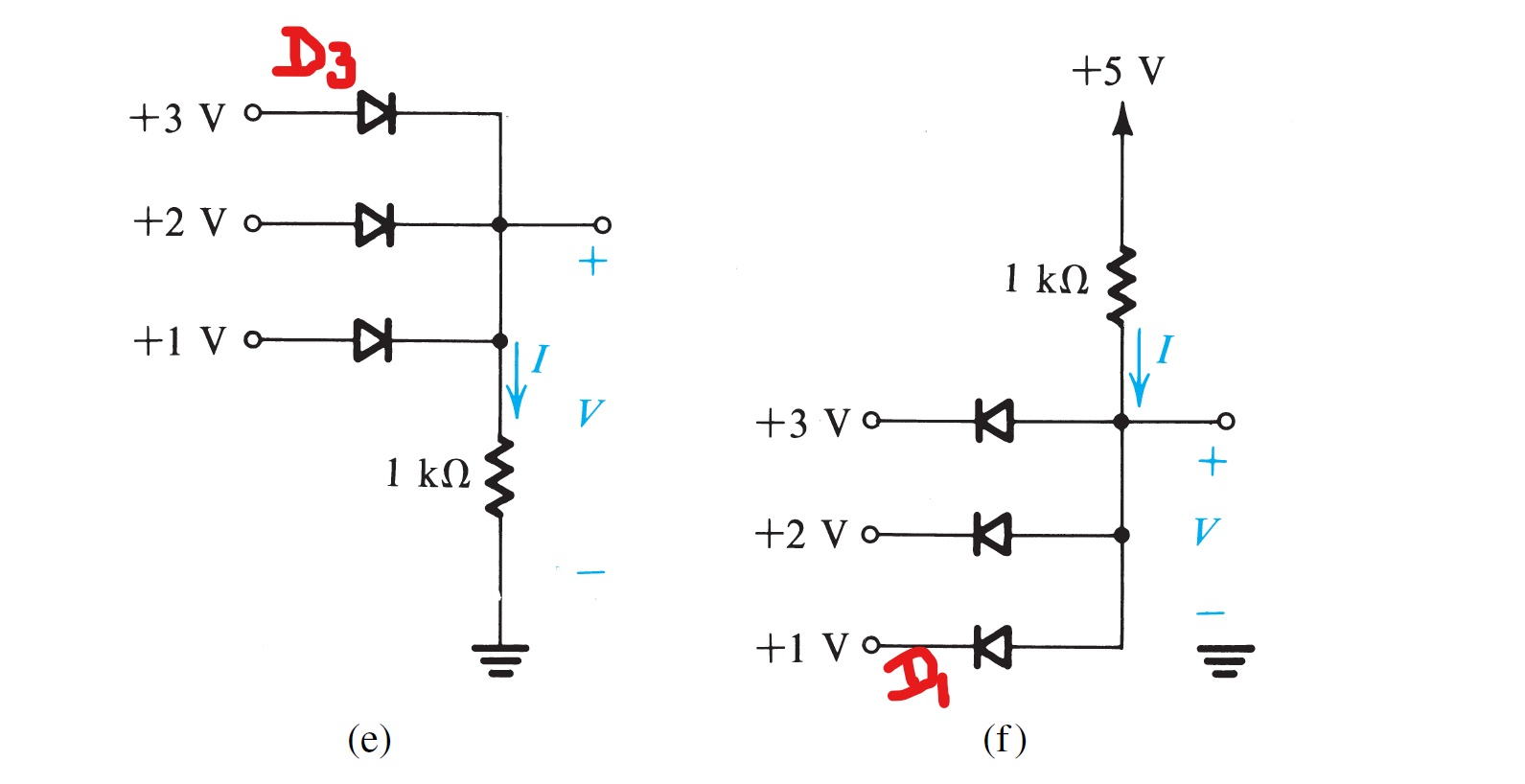One way to arrive at the solution is to think of each diode individually. What would the voltage be at the output if only one diode is present? Assuming 0.5V drop for a diode, in (e) it woudld be 2.5V with only D3, 1.5V with only D2, 0.5V with only D1. (Assuming the diodes are numbed from the top to bottom). Can you see how to determine these voltages?
Now, in each situation, add the other diodes, one by one, and see whether it would influence the situation.
Starting with only D3, if we add D2, it would be blocking, because its left side has a lower voltage than its right side. Same for D1. Hence this situation (2.5 at the output) is consistent.
Starting with only D2, if we add D3 nothing happens. But if we add D1 we have a problem: its left side is 3V, right side 1.5V. That is not consistent with normal diode behaviour (should be 0.5V drop, but we have 1.5V in this situation). Hence this assumption (1.5V at the output) is invalid.
Same reasoning rules out the 0.5V at the output situation.
So we have only one consitent solution: 2.5V at the output, D3 conduction, D1 & D2 blocking.
You can use the same line of reasoning for (f).


